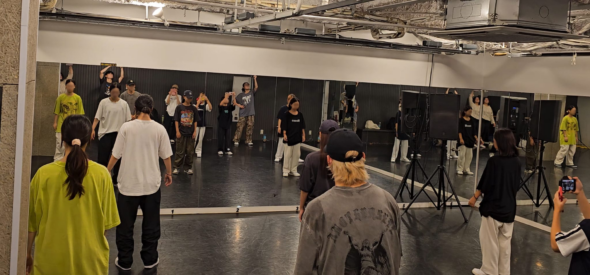This semester I did my CIP at an English school for kids. The teacher is Suemitsu-sensei, who is also one of the host mothers for KCJS, and the English lessons take place in a separate section of her home. When I arrive at her house, generally I’m greeted by not only Suemitsu-sensei, but also her younger sister, their dog, and some of the students who are waiting for class to start.
The regular structure of a lesson that I co-teach entails songs, workbook activities, reading aloud, and an educational game. When a lesson is in session, Suemitsu-sensei generally wants to me to speak English instead of Japanese so that the kids have more exposure to the sound of native English, so there isn’t much communication in Japanese between the teacher, the students, and myself. However, before each lesson, she often explains to me the lesson plan and notifies me of any upcoming events entirely in Japanese. After each lesson, Suemitsu-sensei, her sister, and I will sometimes eat dinner together or just chat freely about our lives. What has stood out to me during my participation in this CIP is how much the communication style can change depending on the conversation topic. For example, when I enter the school or discuss the English lessons with Suemitsu-sensei, she will almost always use keigo or polite speech. On the other hand, when we are talking about our personal lives or eating out at a restaurant, Suemitsu-san and her sister will often talk to me very casually. At these times, I wasn’t sure what speech style to use. While I wanted to close the distance between the teacher and myself and deepen our friendship, I didn’t want to come across as disrespectful by using casual speech.
When I brought this up in my Japanese class, my classmates and teacher said they felt there are definitely times when we can switch to casual speech even if we are talking to someone older than us. Specifically, Nakamura-sensei explained that when we want to express our own emotions, it’s okay to switch briefly. For example, if we are served delicious food, we can say “美味しい!こんなおいしいの食べたことない!” because it’s a display of our individual feelings and appreciation.
Throughout the semester, I would occasionally slip into casual speech if it seemed fit, but whenever I did so, I’d feel a bit a guilt because I didn’t want Suemitsu-sensei to think I was being rude. In retrospect, however, I’m glad I used casual speech when I did because I think it helped me grow closer to Suemitsu-sensei and her sister. Because of that, I feel like our relationship is now based on not only the CIP but also genuine friendship. We celebrated Suemitsu-sensei’s birthday together, and they often invite me to eat dinner at their house. My advice to future KCJS students would be to find the best way to deepen your relationships with the people at your CIP so that the quality of your time not only there but in Kyoto as a whole improves significantly.

